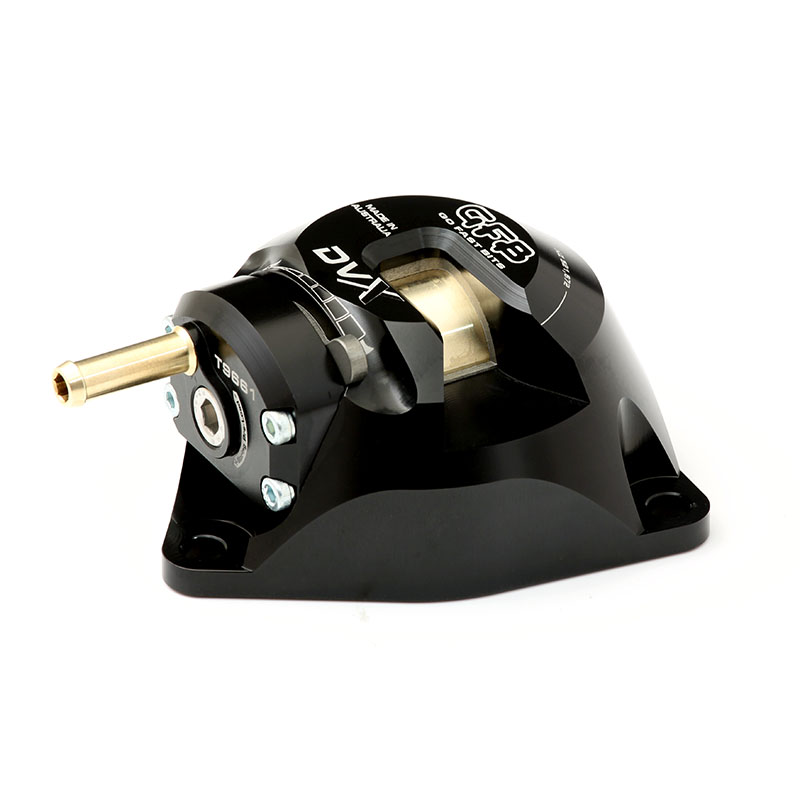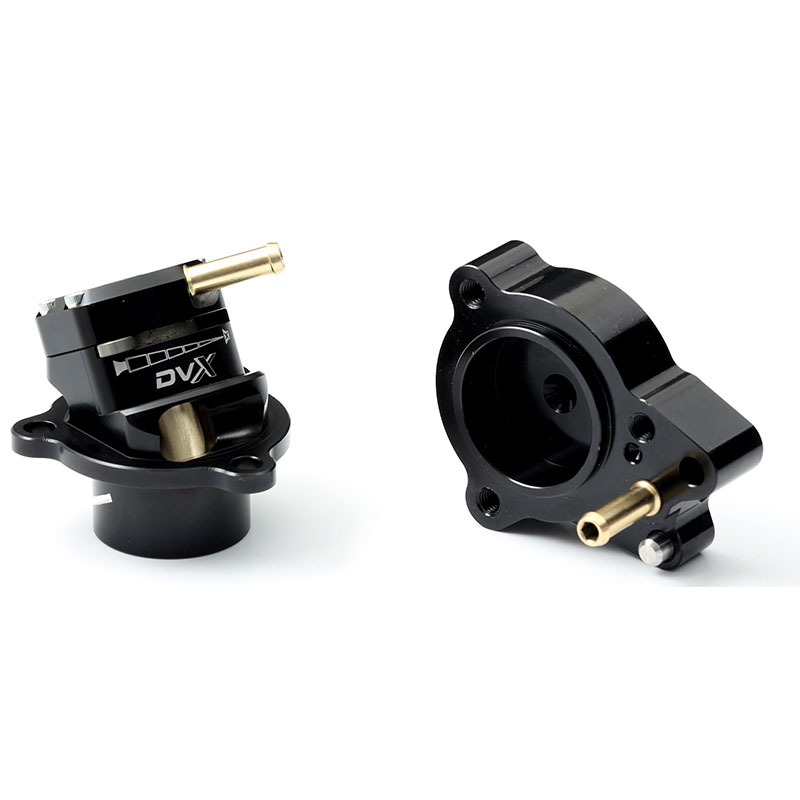Diverter valves often leak, it’s common knowledge. Regardless of the amount of air that escapes a valve, if any air escapes it is correct to say there is a leak.
Common tests used to detect a diverter valve leak include smoke testing the intake tract (read more on this here), removing the valve and pressurising the ports (usually in conjunction with a bucket of water or some soap to find a leak), a vacuum pump on the top port or any combination of these.
When such tests are applied and indicate a leak coming from a GFB TMS valve however, what is often not understood is the scale of a leak, where it originates from, and whether or not it is detrimental to engine performance.
GFB TMS valve design criteria
 GFB TMS valves are designed with maximum throttle response in mind first, followed by the ability to vent to atmosphere for noise (if desired) on cars that typically don’t allow atmosphere venting.
GFB TMS valves are designed with maximum throttle response in mind first, followed by the ability to vent to atmosphere for noise (if desired) on cars that typically don’t allow atmosphere venting.
The piston-type valve design used by GFB satisfies the broadest range of design requirements and applications, which is why it continues to be used. For example, the dual outlet Hybrid design pioneered by GFB back in 1999 is only possible with a piston-type valve – dual outlets and 50/50 venting simply cannot be done with a factory poppet type valve.
Sealing a piston in a bore is simple, right? Use an O-ring and no air will be able to leak past – this is how hydraulic and pneumatic pistons and rams work. GFB TMS valves however, do not use an O-ring on the piston as is sometimes found on other brands, for two important reasons:
1. Minimum sliding friction is a key requirement for both optimum performance and successful atmosphere-venting operation. Friction in the piston travel can cause undesirable side-effects such as poor throttle response, compressor surge, idling problems, stalling and backfiring.
For optimum throttle response, the piston must be able to move freely in reaction to very small changes in pressure (the forces involved can actually be very small). O-rings create significant friction, no matter how loosely compressed, and worse still, the amount of friction varies greatly depending on the amount of lubrication, temperature, and how long the O-ring has been stationary (they tend to take a “set” after a while of not moving, and require significantly more force to get moving again)
It is simply not possible for a piston-type valve to operate properly with even the smallest amount of friction added by an O-ring.
2. O-rings in sliding operation require frequent replacement and/or lubrication.
Instead of O-rings, GFB TMS valves have multiple design features that offer the best balance between lowest friction, longest service life and minimal leak. These features are:
Tolerance:
GFB products are manufactured exclusively on CNC machines capable of holding tolerances to +/- 0.01mm. This is essential since the piston-to-bore clearance is critical to ensure good sealing and low friction.
Material choice:
The piston is made from brass, which offers good corrosion resistance and machining properties for tight tolerances, and relatively low friction as it is often used in bearings and bushings. The bore is anodised aluminium, which also offers good machining properties and therefore tight tolerances, whilst the anodising results in an extremely hard and smooth finished surface that resists wear
Piston ring:

In lieu of an O-ring, GFB’s pistons use a low-friction Ertalyte™ piston ring, designed much like the rings used on high performance engine pistons to spring outwards against the bore to aid sealing.
Of course, like the pistons in an engine, a small amount of air under pressure will be able to “leak-down” from the top chamber between the piston and bore, and through the split in the piston ring, where it will exit through the valve’s venting outlet/s. This is unavoidable if the piston is to remain able to move freely.
If further proof of our argument against the use of O-rings is required, consider that the cost of O-rings in bulk is minimal – usually cents per piece. GFB’s piston design already features a groove into which the piston ring fits, so no design change would be required to swap to an O-ring. Yet we choose the best performance by design, even though the Ertalyte™ piston ring and tight tolerances cost more to produce that O-rings.
What about a diaphragm? Diaphragm-type valve designs (as most factory valves are) boast the ability to completely seal the upper chamber, but they do not satisfy our performance design criteria. This is a topic entirely unto itself, and will be covered elsewhere.




